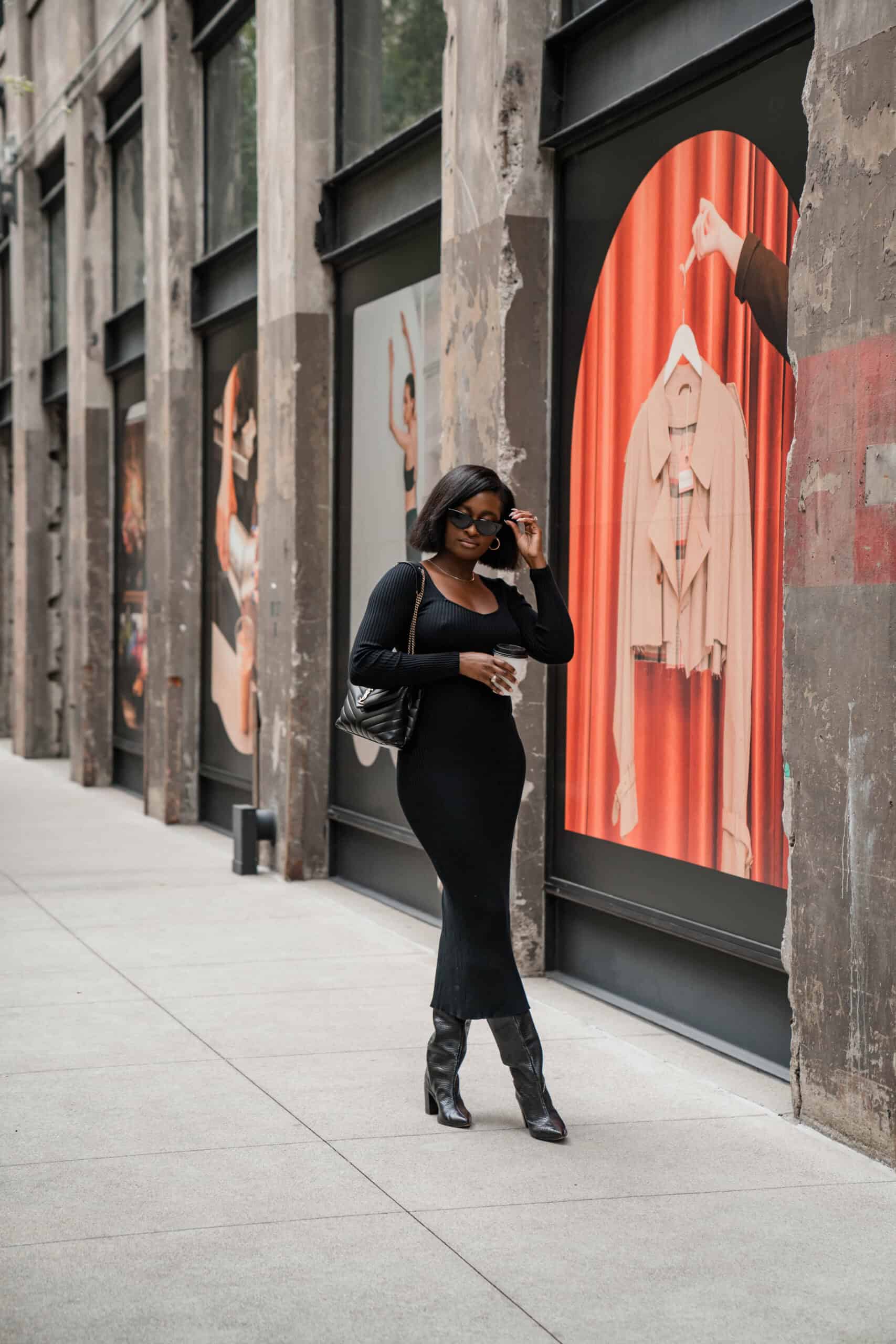We all know her. That woman.
The one who walks into a room and somehow doesn’t need to raise her voice to command it.
She’s not the loudest or the flashiest, but something about her feels unshakable.
She’s not chasing approval. She’s anchored in self-trust.
But here’s the secret no one tells you: she’s not some mystical unicorn. She’s just someone who decided to stop abandoning herself. And that’s a decision you get to make too.
Daily, quietly, and often before anyone else notices the shift.
If you love the idea of becoming that woman but want low-effort ideas, here’s a playful starter list I love.
This, however, isn’t your typical empowerment listicle.
These are the mindset shifts, daily choices, and self-honoring habits that make a huge difference when you implement them. Especially when no one’s watching.
Let’s dig in.
7 Ways to Become That Woman (and Actually Mean It)
1. Get Comfortable Being Uncomfortable
Growth isn’t glamorous. It usually feels awkward, uncertain, and wildly inconvenient.
I remember accepting a leadership role that I didn’t feel “qualified” for.
My instinct was to decline. To just play it safe, I stayed where I was comfortable. But something in me knew: the discomfort meant I was in the right place.
I wasn’t underprepared. Instead, I was evolving.
The truth is, if it always feels good, you’re probably just repeating yourself.
Discomfort is just the tax you pay for growth. And the more you feel it, the less scary it becomes.
You start realizing that every time you’ve leveled up.
Whether it was moving to a new city, ending a relationship, or starting a job you weren’t “ready” for, discomfort was in the passenger seat. Not driving, just tagging along, trying to convince you to turn back.
When you’re ready to level up, sometimes a full life reset is the best way to make space for the new you.
Try this: Say yes to one thing this month that scares you. Not because it’s reckless, but because it stretches you. Watch how fast you recalibrate when you realize fear and progress can coexist.
2. Stop Fixating on Flaws
You are not a problem to be solved.
We’ve been taught to micromanage every part of ourselves – our weight, our tone of voice, our ambition, as if perfection will finally earn us safety.
But flaws are not the enemy. Pretending to be someone you’re not? That’s what keeps you small.
Here’s the shift: What if the thing you keep hiding (your big laugh, your curly hair, your sensitive nature) is actually the thing that draws the right people and opportunities to you?
Think of the people you’re drawn to. Chances are, it’s not because they look like a flawless mannequin.
It’s the gap in their teeth, the way they laugh too loudly at the wrong time, the tiny scar above their eyebrow.
Perfection is sterile. Your quirks are your invitation for the right people to feel safe around you.
Quick experiment: The next time you catch yourself trying to shrink, edit, or “fix” something that’s just human, pause instead. Ask: Am I doing this to feel more like myself or more like someone else’s idea of being acceptable?
3. Take the Risk. Really.
We talk a lot about confidence, but here’s the real formula: action first, confidence second.
It’s never too late to become the version of yourself you’ve been dreaming about — here’s a late-bloomer glow-up guide to prove it.
No one feels 100% ready. You earn readiness through motion. I’ve submitted applications, pitched projects, and had uncomfortable conversations with knees metaphorically (and sometimes literally) shaking.
Guess what happened? Sometimes it worked out. Sometimes it didn’t. But every single time, I grew. That’s the win.
If the experiment “fails,” you still get the most valuable thing: clarity.
Every risk you take is like adding a breadcrumb to the map of who you are and what matters to you.
Even the ones that flop make you braver for the next one.
Your move: Reframe risk as an experiment. Your job isn’t to get it perfect. Your job is to get the data. “Did that move me closer to who I want to be?” is a better question than “Did I crush it?”
4. Rewrite the Script in Your Head
If your internal dialogue were broadcast out loud, would you want anyone you love to hear it?
Probably not.
Most of us live with an unchecked narrator that sounds like a burned-out middle manager with a grudge.
She’s harsh, paranoid, and convinced you’re always a step behind. The good news? You don’t have to keep her in charge.
Try this: Start naming your default script when it shows up. “There’s that voice that says I’ll mess it up.”
Don’t argue with it, just observe it. Then swap it with something truer and kinder. Over time, that nagging negative voice gets quieter, and a new one, a more grounded, supportive, and honest one, gets stronger.
RELATED: 25 Lazy Ways to Become “That Girl”
5. Invest in Yourself Without Apology
Waiting until you’ve earned it? Until you’re “in the right season”? Until you’re less overwhelmed?
That’s how years slip by while you’re still trying to “deserve” rest, joy, or growth.
Investing in yourself isn’t a reward. It’s a requirement.
This could mean anything, like going to therapy, hiring a coach, signing up for the class, or just blocking off Saturday mornings to write or walk or rest.
It doesn’t have to be fancy. But it does have to be intentional.
Avoid This: Treating self-investment like a treat you have to earn with exhaustion or suffering.
You don’t have to max out your capacity before you give yourself permission to upgrade your life.
Even small investments, the right pillow, the better coffee, the Saturday morning walk, can be radical acts of self-respect.
Self-care isn’t just bubble baths. These self-care do’s and don’ts make sure your energy is going where it counts.
Quick experiment: Ask yourself, what would I do this month if I believed I was worth the effort? Start there.
6. Treat Self-Care Like a Strategy, Not a Trend
Self-care is not the “fun thing” you get to do after being exhausted. It’s the thing that keeps you from unraveling in the first place.
It’s not always pretty. Sometimes it’s going to bed instead of revenge-scrolling.
Sometimes it’s drinking water before another iced latte. Sometimes it’s saying no, even when it makes you feel guilty for five minutes.
If you only use self-care when you’re at the breaking point, it’s like putting gas in your car after you’ve already run out on the highway.
Make it part of the maintenance schedule, not the emergency kit.
Curious why this matters? Here’s a quick read from a reputable source on why consistent self-care reduces stress and decision fatigue.
The good news is that tiny changes are easier to stick with when you try habit stacking, my favorite way to build momentum without burnout.
Your move: Build a weekly non-negotiable ritual that refuels you. Not for productivity. Not for optics. For you. Then guard it. Fiercely.
7. Design Your Own Blueprint
The fastest way to feel like you’re failing? Compare your timeline to someone else’s highlight reel.
I used to think I was “behind.” Behind in career. Behind in love. Behind in confidence.
Then, one day, I realized: I was measuring my life against an idea of the “perfect woman” that was never mine.
You can’t create a fulfilling life if you’re trying to live someone else’s version of it.
Try this: Make a list of your values. Not the ones that sound impressive or like what you’re supposed to want, but the ones that feel true. Use those as your filter for what gets your time, your energy, and your care.
Bonus: Quick Ways to Become That Woman
Looking for quick changes you can make and actions you can take to start your path to becoming “that woman.” ASAP?
Check out these ways to reframe your energy and step into your ultimate self quickly.
That Woman Starter Kit:
- Wear lipstick to the grocery store, just because.
- Use the good dishes on a Wednesday night.
- Say no to one thing that drains you.
- Text the friend who always makes you laugh.
- Make one small choice today: confidence, not fear.
Final Word: She’s Not a Fantasy – She’s a Choice
Becoming that woman is less about reinvention and more about reconnection. To your voice. Your intuition. Your needs. Your courage.
She’s not some future version of you after six promotions and a wardrobe overhaul. She’s the one who already lives inside you, waiting for you to choose her.
Even that woman needs to recharge. Here are blissful de-stress activities that make it feel like a treat instead of a chore.
And, when your focus is slipping, these 5-minute fixes for brain fog can help you get back on track without pushing harder.
Choose her today. And again tomorrow. That’s how she rises.

Here’s to the self-assured version of you that isn’t waiting for permission anymore.
Real-Life
Work in Progress.
Founder. Writer.
Roxy is the creator of The Everyday Flourish, a relatable personal growth blog for women who are tired of burnout, chaos, and hustle culture.
A recovering overthinker and unofficial life guinea pig, she shares honest self-care strategies, ADHD-friendly productivity tips, and mindset shifts that actually feel doable.
Around here, personal growth comes with grace, not pressure - and a lot fewer to-do lists.








